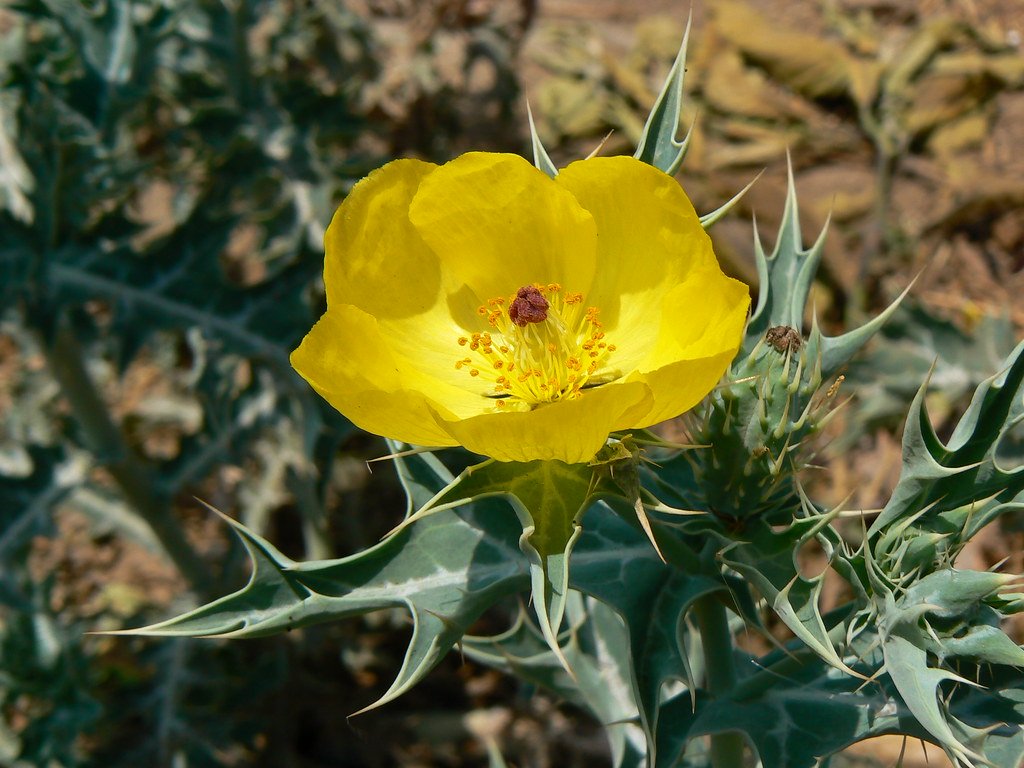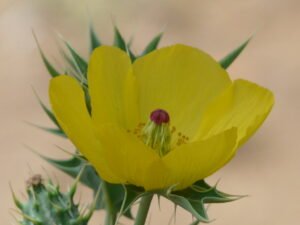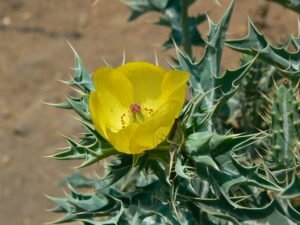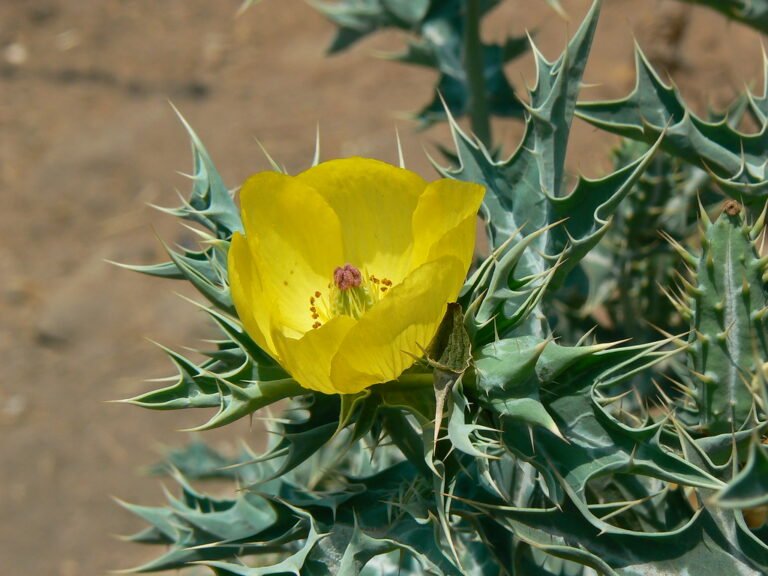Overview
You search ends here and You can Find Your answer of See all the websites, after seeing all come to this website.You Can Find the exact answer of All About Brahmadandi-Satyanashi-Oligochata-Asteraceae Lets start with basic.The plant known as “Brahmadandi” is distributed across various regions worldwide, including Afghanistan, Baluchistan, Europe, North Africa, and Western Asia. Within India, it is commonly found in central, western, and southern regions, spanning from Punjab to Bihar and encompassing the upper Ganga plains. Its presence extends from Sindh to Karnataka and the Deccan, reaching the north-western Himalayas at altitudes of around 1000 meters.
The nomenclature “Brahmadandi” draws inspiration from its unique appearance, drawing a parallel to the symbolic lotus associated with Hindu mythology. Much like the lotus emerging from the navel of Lord Vishnu, with a stem supporting Lord Brahma, this plant exhibits a similar structure. The Brahmadandi plant takes on the form of a stem, culminating in flowers resembling a pink, thorny lotus. The association with the divine figures of Vishnu and Brahma is reflected in its name, emphasizing the resemblance to the sacred lotus linked to these revered deities.
The plant’s geographical distribution encompasses diverse climates and terrains, from the mountainous regions of the Himalayas to the plains of North India and the Deccan plateau. Its distinctive appearance, reminiscent of the symbolic lotus in Hindu mythology, adds to the cultural significance of the plant, earning it the name “Brahmadandi” as a nod to its resemblance to the divine lotus associated with Lord Vishnu and Lord Brahma.
Chemical composition of Brahmadandi-Satyanashi-Oligochata-Asteraceae
Chemical composition :-The upper part of this plant contains substances called β-sitosterol and β-D-glucoside.
In its aerial parts, you can find water-soluble alkali, fruit sugar, triacontane, stigmasterol, sitosterol, β-D-glucoside, jasiocidin, spigenin, cyaneropicrin, and trachyloside.
The upper parts of the plant also have jasiocidin, cyaneropinene, procumbenin, apigenin, a glucoside named chrysoariol and its 7-0-glucoside, trachyloside, β-sitosterol and its glucoside, cycloartenol, triterpenes, fructose, triacontane, stigmasterol, and sitosterol.





Physical Appearance of Brahmadandi-Satyanashi-Oligochata-Asteraceae
Physical Appearance :-This plant is tough and loves rainy weather. It has a straight stem and branches that spread smoothly. The branches, around 30-60 cm long, are somewhat white and can feel a bit rough. The leaves come in various sizes, are simple, and are placed one after the other. They have notches, sharp thorns, and edges resembling little teeth. Some leaves may even have black spots on the top.
The flowers show up at the front of the branches and have a round shape. When they open up, they take on a bowl-like form and can be purple, pink, orange, or brown. They carry a pleasant fragrance, and there are soft thorns around them. A long stem grows from the middle of the bush, and on the front are long, round, smooth, brown fruits with thorns, looking like knobs. This plant usually blossoms and produces fruits between January and March.







In Different Languages
Amberboa divaricata Kuntze (Amberboa divaricata)- एम्बरबोआ डायवेरीकैटा
Oligochata (ओलिगोचैटा)
Properties of Brahmadandi-Satyanashi-Oligochata-Asteraceae
- Brahmadandi possesses bitter, pungent, and hot qualities. It serves as an expectorant, inflammatory agent, stimulant, antidote, anti-inflammatory, anti-odor, cardiac tonic, laxative, and strengthener. Additionally, it exhibits properties that are anti-inflammatory and anti-cough.
- Properties such as cell toxicity were observed in chloroform derived from the ethanolic extract.
- The extract, made with 50% ethanol, helps prevent cancer in the nasal tissues of both humans and female rats.
Medicinal use of Brahmadandi-Satyanashi-Oligochata-Asteraceae ( Benefits of Brahmadandi-Satyanashi-Oligochata-Asteraceae)
Throat Care: Goiter – Grinding the root of Brahmadandi with rice paste and applying it is beneficial in goiter.
Chest Care: Consuming 1-2 grams of Brahmadandi-Panchang powder provides relief in breathing and cough.
Stomach Care: Colic- Consuming 1-2 grams of Brahmadandi-Mool powder relieves colic.
Kidney Care: 1.Urinary Disorder – Soaking Brahmadandi root in water, filtering it and drinking it in 10-20 ml quantity stops blood in urine.
2.Menorrhagia- Consuming 1-2 grams Brahmadandi powder with milk is beneficial in menorrhagia.
Reproductive Care: 1.To ease vaginal issues, grind Brahmadandi leaves, mix them with honey, and apply the mixture on the vagina.
2.For quick relief from leucorrhoea, dissolve 12 grams of Brahmadandi-Panchang, 6 grams of Rasanjan, and 6 grams of sugar candy in 120 ml of water. Filter the mixture through cloth and consume 10-15 ml of it.
3.To alleviate post-delivery uterine colic pain, soak Brahmadandi in water, filter it, and give the liquid to drink.
Skin Care : 1.Grinding Brahmadandi and putting it on the skin helps treat skin issues.
2.When you grind Brahmadandi and apply it, it makes body pimples disappear.
3.Grinding Brahmadandi and applying it on the face can get rid of facial problems like freckles and improve complexion.
4.For leprosy, mix 7 black peppers with 1 gram of Brahmadandi-Panchang powder, grind it, consume it, and include gram roti in your diet for benefits.
5.Mix ghee with Varna-Brahmdandi-Panchang-Bashma, apply it on the ulcer, and it will help the ulcer heal.
Systemic Care : 1.Fever – Taking 1-2 grams of Brahmadandi-Panchang powder can help lower fever and reduce inflammation.
2.Blood disorders – Using Brahmadandi-Panchang in ice or powder form can cleanse the blood and ease blood disorders.
3.Applying Shoth-Brahmdandi-Panchang-Bhasma on inflamed areas can help relieve inflammation.
Chemicalization :Vajikaranarth – The enhancement of Vajikaran properties is achieved by kneading wheat flour with Brahmadandi-swaras, creating bati, and consuming it with a mixture of ghee and sugar candy.
I hope You Got the answer of All About Brahmadandi-Satyanashi-Oligochata-Asteraceae.
Click Below For more Important Post 👇


Each time I read your blog, I walk away with something new — a fresh perspective, a useful tip, or a thoughtful question to consider.
Thank you so much for valuable comments-Now We are back on track with new posts with very clear knowledge .Please stay tuned with us 😊